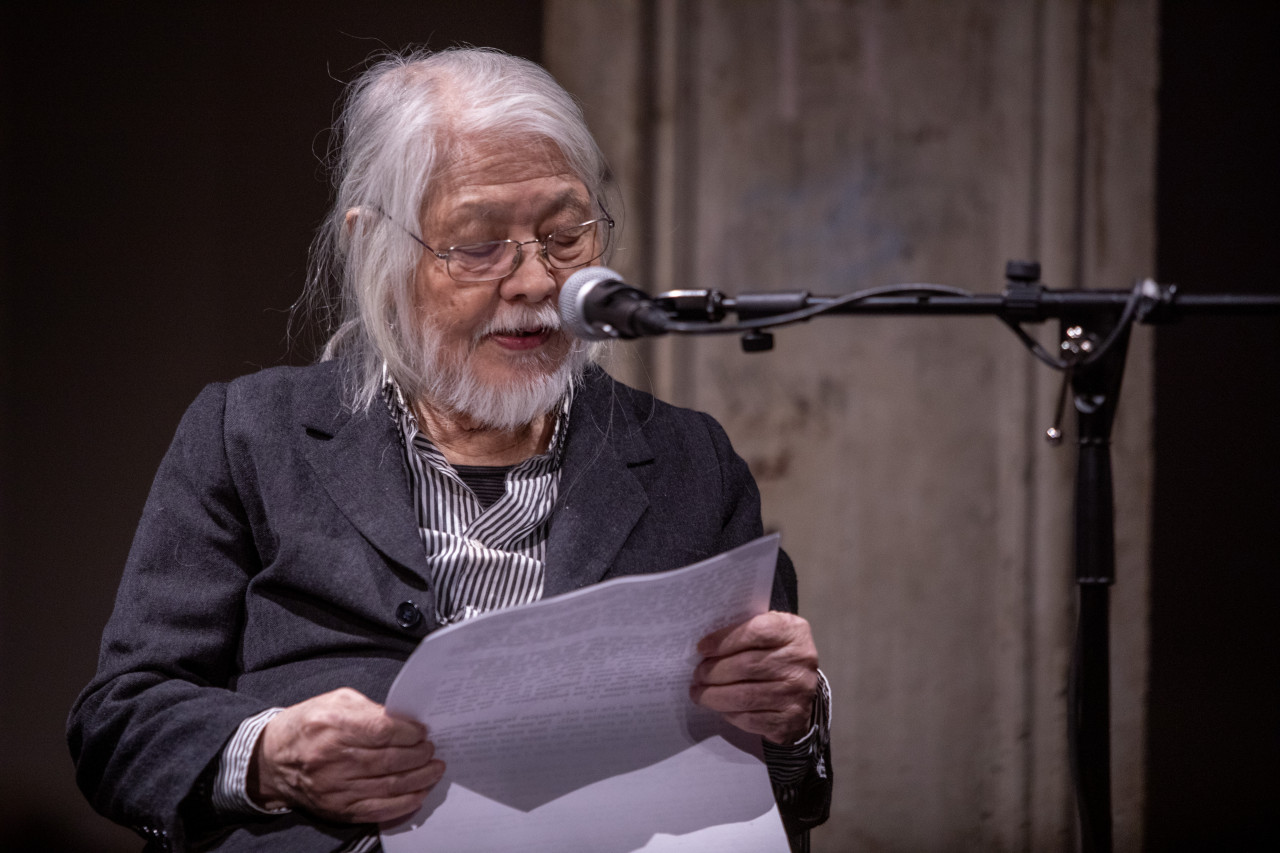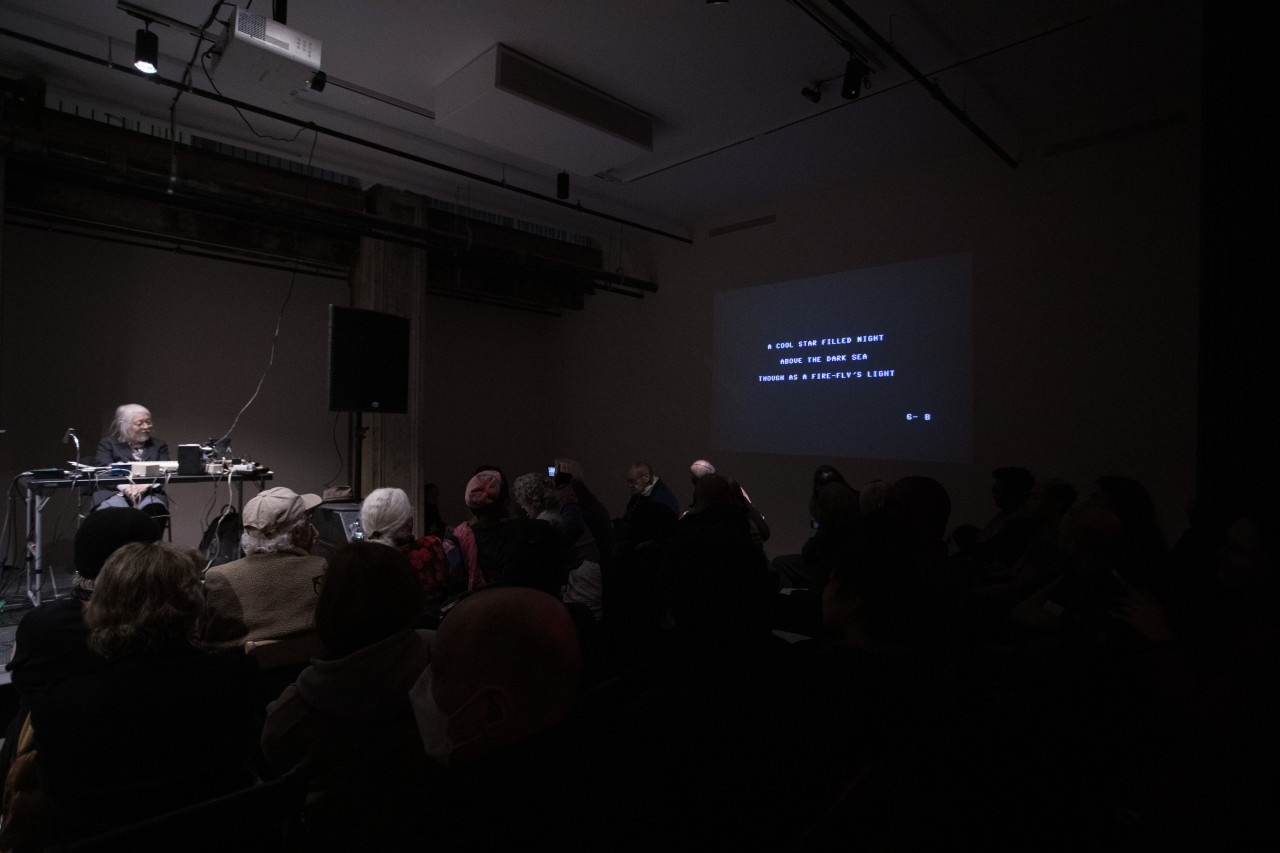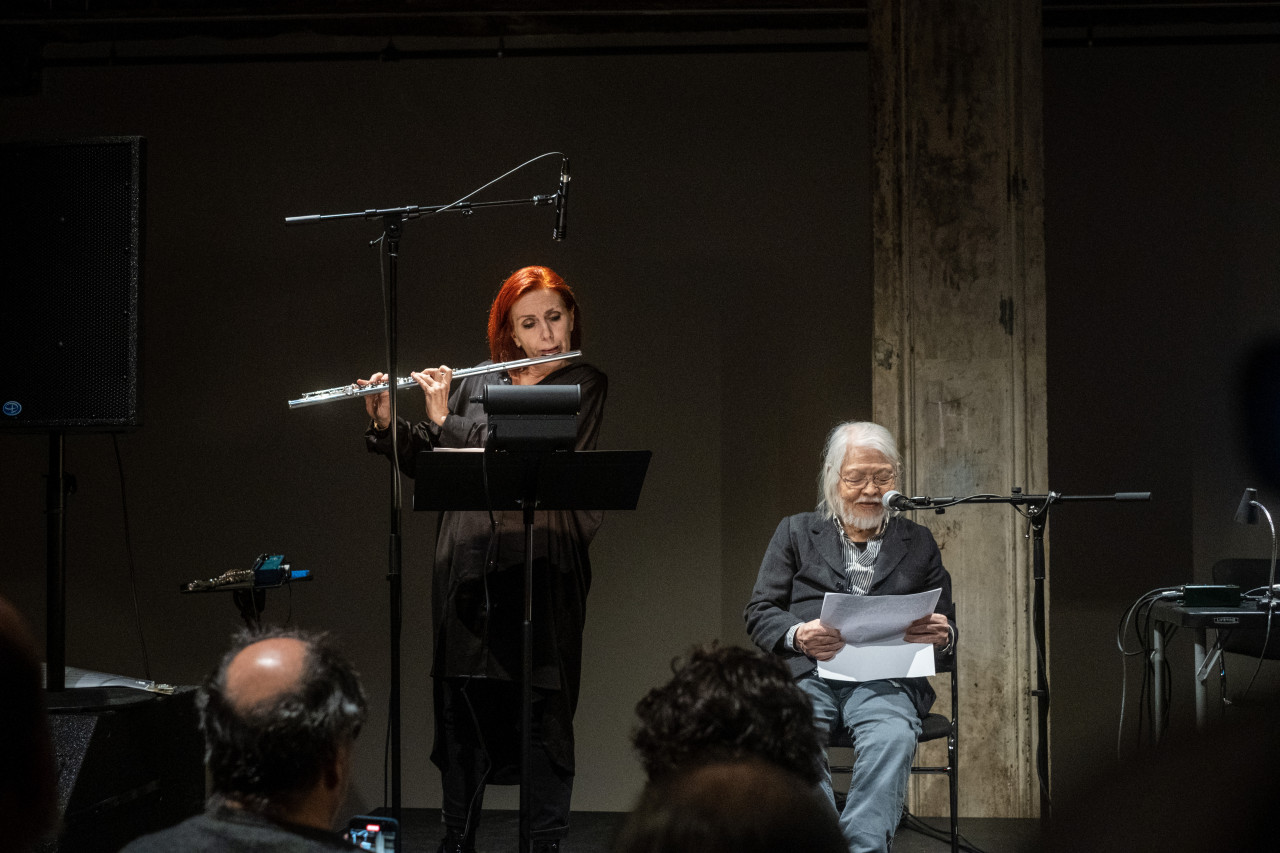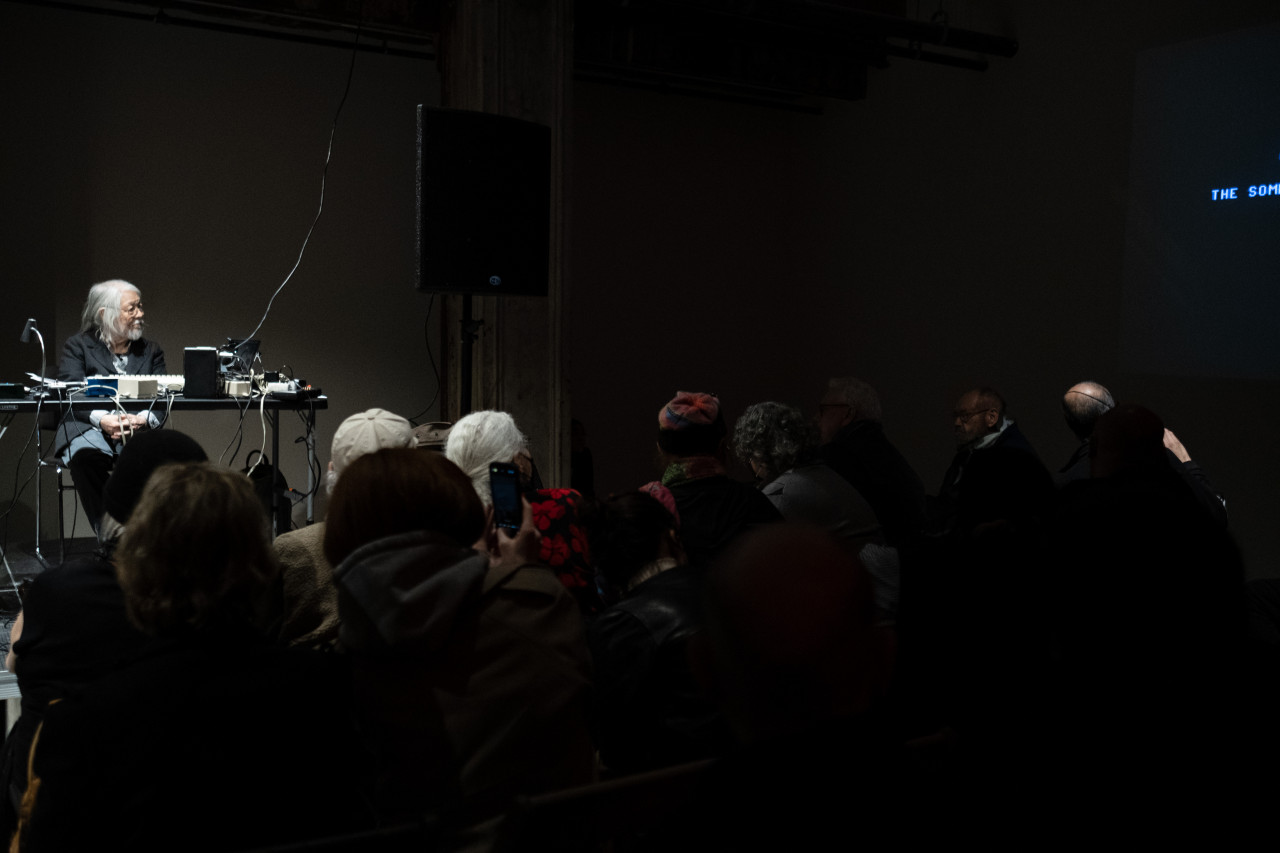Concert
January 19, 2023, 8pm
As part of the retrospective Yasunao Tone: Region of Paramedia, Artists Space is pleased to present a special concert with legendary sound artist Yasunao Tone and flutist Barbara Held. For this rare performance, the pair will perform four pieces Tone originally composed for Held—Trio for a Flute Player (1985), Aletheia (1987), Lyrictron for Flute (1988), and Zen and Music (1990).
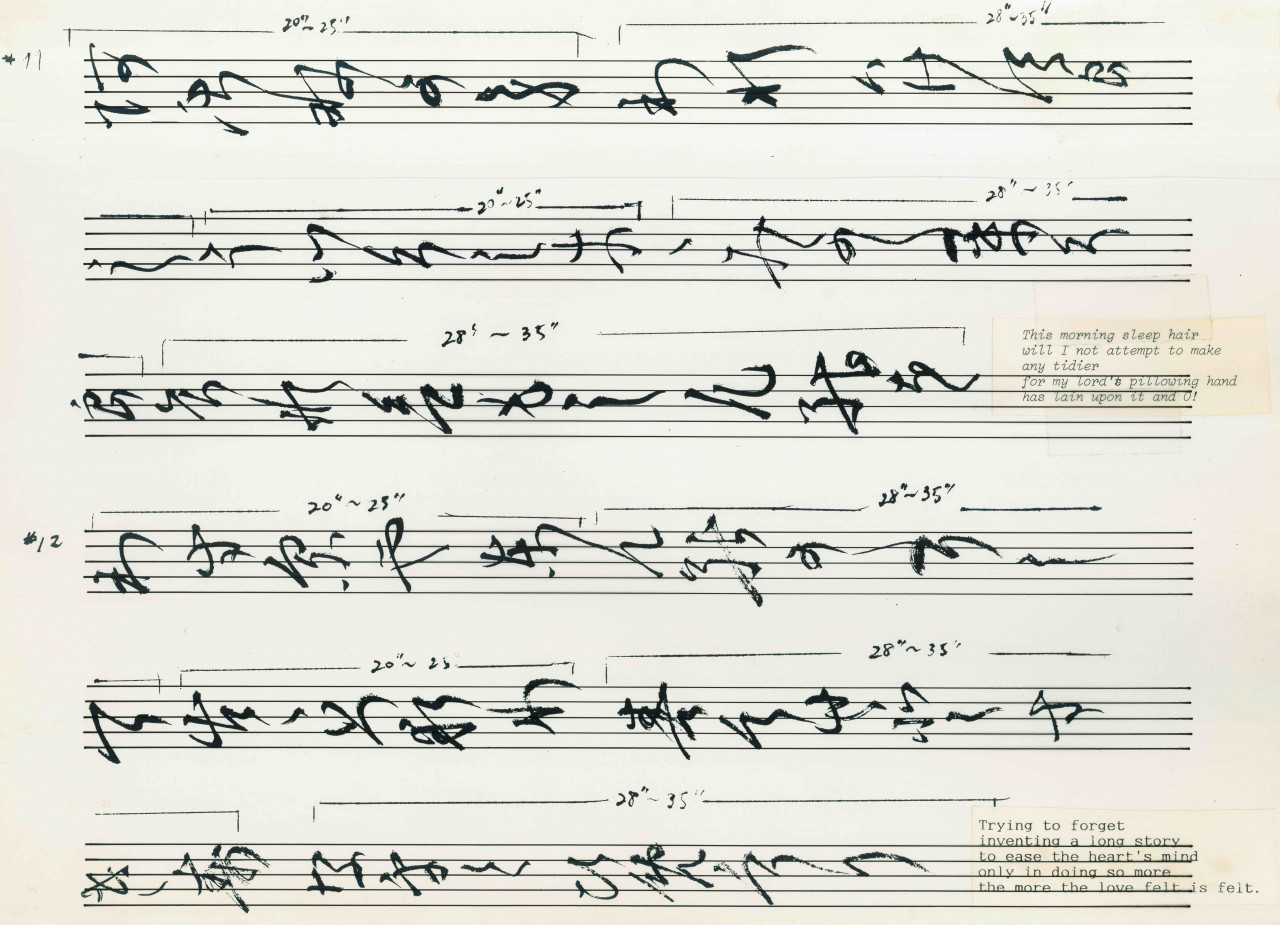
Throughout the 1980s, Tone and Held performed several pieces that challenge traditional notions of composition; namely, the role of composer and performer, the legibility of a score, and the perception of sound as “music.” The point of departure for each of those featured in this performance is a found text—the seventh-century Man’yoshu anthology of poems (Trio for Flute Player), an ancient Chinese dance score (Aletheia), Tang dynasty flute tablatures (Lyrictron for Flute), and ancient Japanese shakuhachi flute music (Zen and Music). From these sources, Tone’s scores embark on an open-ended translation across media, technology, and writing systems. In Trio for a Flute Player, for example, musical staves printed on transparencies are superimposed atop calligraphic renderings of poems in Classical Japanese, with twentieth-century English translations included on each sheet. Transforming the written notation into sound, Held reads the poems in English through the mouthpiece of her flute while fingering the keys of her instrument, their position determined by a reading of the Japanese characters as they appear on the staves as tablature. Her instrument, which she calls her “Tone hacked flute,” is modified with foam pads placed on the keys that, when pressed, alter the strength of an electric current running through an oscillator and cause unpredictable variation in the pitch and intensity of the sound.
In performing these pieces, Held reads each text-based score faithfully and without interpretation. Focusing on a literal translation of the score’s instructions, the performer loses any sense of the text’s original meaning and the impulse to play according to her own classical training. What follows is undirected and uncontrolled sound modulated by the vacillating noise of Tone’s technical interventions.
On the occasion of this exhibition and performance, the audio engineer David Meschter has restored the Lyrictron system he created for Tone in 1988, which will be used in the eponymous performance. Lyrictron consists of a computer program that converts flute pitches into words recited by a computerized voice and expressed as impromptu haikus on a monitor.
Yasunao Tone: Region of Paramedia is on view at Artists Space January 13 – March 18.
